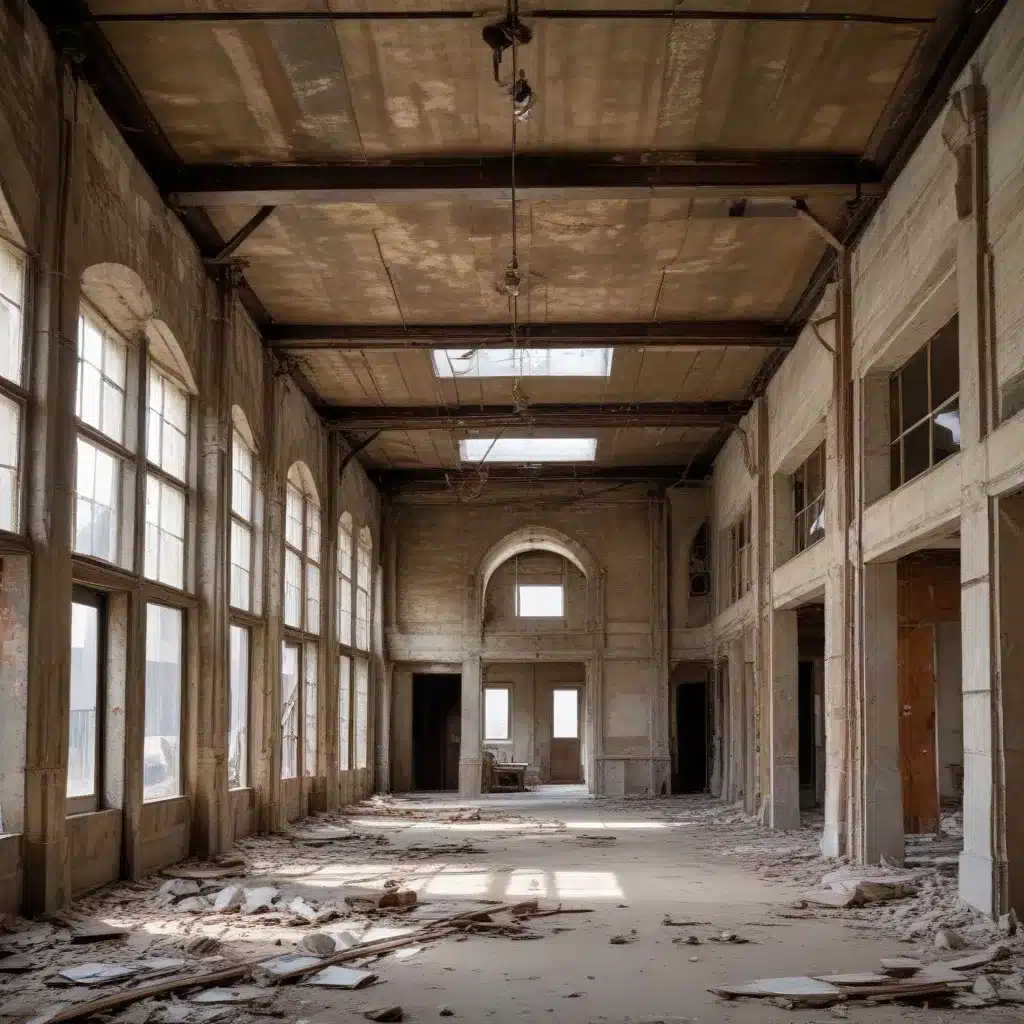
The Art of Transforming the Old into the Extraordinary
In a world where sustainability and innovation are at the forefront of design, the concept of adaptive reuse has emerged as a powerful tool for Interior Designers and Construction Professionals. By breathing new life into abandoned or underutilized structures, we can not only preserve the rich history and unique character of a building but also create remarkable spaces that cater to the evolving needs of modern living.
Unlocking the Potential of Existing Structures
Adaptive reuse is the practice of repurposing an existing building or structure for a new function, rather than demolishing it and constructing something entirely new. This approach not only reduces waste and environmental impact but also presents an opportunity to uncover the hidden gems within forgotten spaces.
“Adaptive reuse is the practice of refurbishing an existing building for a new purpose. The term became popular in the early 1970s, when Boston’s Old City Hall was converted into an office and retail complex.”
By carefully examining the bones of a structure and identifying its inherent strengths, Interior Designers and Construction Professionals can devise innovative solutions that transform the old into the extraordinary. Whether it’s converting a former factory into loft-style apartments, transforming a historic bank into a cutting-edge office space, or reimagining a dilapidated school as a vibrant community hub, the possibilities are truly endless.
Preserving the Past, Embracing the Future
One of the key advantages of adaptive reuse is its ability to preserve the unique character and historical significance of a building. Rather than erasing the past, this approach celebrates it, weaving the rich tapestry of a structure’s history into the design of its new incarnation.
“Adaptive reuse reverses that. Multi-use renovations encourage new business development in established neighborhoods. Communities become more walkable, more vibrant, and more economically stable.”
By carefully restoring original architectural details, salvaging materials, and highlighting the building’s heritage, Interior Designers can create spaces that seamlessly blend the old and the new. This not only honors the building’s past but also imbues it with a sense of authenticity and character that cannot be replicated in a brand-new construction.
Sustainable Design Meets Adaptive Reuse
Alongside the cultural and historical benefits, adaptive reuse also offers significant environmental advantages. By repurposing existing structures, we reduce the need for new construction materials, minimize waste, and lower the carbon footprint associated with the building process.
“Adaptive reuse protects a city’s unique heritage. Renovating buildings rather than tearing them down preserves the character of historic areas. It also revives dying urban centers.”
Interior Designers who specialize in adaptive reuse projects often incorporate sustainable design principles, such as energy-efficient systems, renewable materials, and innovative water management solutions. By thoughtfully integrating these elements, they create spaces that not only honor the past but also pave the way for a more sustainable future.
Navigating the Challenges of Adaptive Reuse
While the rewards of adaptive reuse are numerous, the process is not without its challenges. Construction Professionals and Interior Designers must navigate a range of obstacles, from complying with modern building codes to overcoming layout constraints and missing architectural plans.
“Some of the challenges that go along with repurposing an existing building seem daunting, but they can be overcome. Getting expert advice during site selection and working with experienced architects can save a great deal of money and heartache.”
By collaborating with skilled professionals who have a deep understanding of adaptive reuse, these challenges can be transformed into opportunities. Architects and designers who specialize in this field can devise creative solutions, leverage alternative funding sources, and utilize innovative construction techniques to bring new life to abandoned structures.
Revitalizing Communities through Adaptive Reuse
The impact of adaptive reuse extends far beyond the walls of a single building. This approach to design and construction has the power to revitalize entire communities, breathing new energy into once-forgotten neighborhoods and creating vibrant, sustainable hubs of activity.
“Adaptive reuse reverses that. Multi-use renovations encourage new business development in established neighborhoods. Communities become more walkable, more vibrant, and more economically stable.”
As Local Builder London has witnessed firsthand, the transformation of abandoned structures can spark a ripple effect, attracting new businesses, residents, and investments to the area. By repurposing these spaces into multi-use environments, Interior Designers and Construction Professionals can foster a sense of community, promote economic growth, and contribute to the overall revitalization of the local landscape.
The Future of Adaptive Reuse: Limitless Possibilities
As the demand for sustainable and innovative design solutions continues to grow, the future of adaptive reuse remains bright. Interior Designers and Construction Professionals who embrace this approach will be at the forefront of shaping the built environment, uncovering the hidden potential within existing structures and creating truly remarkable spaces that stand the test of time.
“Adaptive reuse has a number of benefits over new construction. It provides cost savings to building owners, has a lower negative impact on the environment, and creates physical and psychological benefits for the community.”
Whether it’s the conversion of a decommissioned industrial site into a vibrant arts and entertainment district or the transformation of a historic school building into a modern coworking space, the possibilities for adaptive reuse are limited only by the creativity and vision of those who dare to reimagine the old and breathe new life into it.
At Local Builder London, we are proud to be at the forefront of this exciting movement, collaborating with Interior Designers and Construction Professionals to bring new life to abandoned structures and create spaces that inspire, delight, and enrich the lives of the communities they serve.


